The Scaled Agile Platform (SAFe) is a publicly accessible virtual knowledge base that enables you to implement enterprise-level lean-agile techniques. For software development, it offers an easy and flexible interface. It is a collection of organizations and patterns in workflow developed to guide businesses in implementing lean and agile techniques. It consists of three categories: team, program, and portfolio.
The SAFe framework enables the team to:
- Enterprise-level implementation of Lean-Agile applications and frameworks.
- It is founded on the concepts of Lean and Agile.
- It offers comprehensive guidelines for work in the portfolio, value chain, program, and team of the enterprise.
- It is planned to address all stakeholders’ needs within an enterprise.
‘SAFe’ was first formulated in the area and was drafted in the books and blog of Dean Leffingwell. The first public release of version 1.0 was in 2011. Released in October 2018, the new update is 4.6. It offers guidance to operate at the levels of enterprise portfolio, value chain, program, and team.
Purpose of Agile Framework
It is an architecture that is simple and lightweight, but it is capable of meeting the requirements of large value chains and of creating complex systems. With the implementation of the ‘SAFe’ agile system, you will have the following benefits:
- Improve efficiency by 20-50 percent
- improved quality by 25 -75 percent
- Lead time is quicker than 30 -75 percent
- Improved workforce participation and better productivity by 10-50 percent
Source
The image below illustrates how the agile process functions. Epics are a wide body of work that is further broken down into a variety of smaller stories or sub-epics. These sub-epics are delegated as a story to the team. Each team will focus on these stories or app functionality respectively.
Scaled Agile Framework Architecture
Source
Using the Scaled Agile Platform
- When a team is involved in applying an agile strategy systematically across broader, multi-team projects and portfolios.
- Where multiple teams run their unique way of executing Agile but face challenges, delays, and setbacks regularly.
- Where teams want to run independently.
- When you plan to scale Agile around the enterprise but do not know what new roles will be expected or what current roles (i.e. management) need to modify and how.
- When you wanted to scale Agile across the enterprise but failed to achieve a standardized or consistent approach across company departments from portfolio to program and team levels.
- If a company wants to enhance the lead time for product development and try to learn how other organizations have achieved in scaling Agile with Scaled agile framework.
Scaled Agile Framework VS other Agile Frameworks
Now, let’s see how the Scaled Agile framework varies from other agile methods.
- It is open to the public and free to download.
- Available in a form that is highly approachable and usable.
- It is lightweight, technically proven, and level-specific.
- It alters/maintains most commonly used agile practices continuously/regularly.
- Offers valuable extensions to popular agile practices.
- Grounds for agile practice in the context of an enterprise.
- Provides a complete overview of the development of software.
- On all levels, visibility or transparency is more significant.
- Continual or regular feedback on performance and enhancement.
Scaled Agile Framework Pillars
Scaled Agile Framework stands on the foundations of the following 4 entities.
- Lean-Agile Principles
- Core Values
- Lean-Agile Leadership
- Lean-Agile Mindset
- Lean-Agile Principles
To get the desired outcomes, these fundamental SAFe Agile principles and values must be acknowledged, portrayed, and maintained.
- Taking an economic view
- Apply cognitive systems
- Assume variations; preserve alternatives
- Construct iteratively with fast, integrate learning cycles
- Base milestones on an authoritative assessment of working systems
- Visualize and restrict work in process, decrease batch sizes and control lengths of queues
- Apply cadence and cross-domain scheduled synchronization
- Enhance the intrinsic motivation of skilled workers
- Decentralization of decision making
- SAFe Agile Core Values
The SAFe Agile methodology is based on these four values.

Alignment:
- SAFe facilitates alignment.
- Alignment begins at Structural themes in the Backlog portfolio and Heads down to the Program Backlogs Vision and Roadmap and then Transfers to the backlogs of the team.
Quality built-in:
- Guarantees that each incremental delivery represents quality expectations.
- Quality is not incorporated into “added later”
- Built-in consistency is a requirement for Lean and is mandatory.
Transparency:
- Accountability is a source of confidence.
- SAFe allows the organization to achieve accountability at all levels-Executives, Portfolio Managers, and other stakeholders.
- Everyone will see the backlog/Kanban portfolio, the backlog/Kanban program, and the Backlog/Kanban, team.
- Every level has a specific understanding of the objectives of the PI.
- Train programs have access to the backlogs of the team, as well as other program backlogs.
- Teams and projects provide insight into the epics of industry and design. They will see what could be coming their way.
Program Execution:
- SAFe puts significant importance on working processes and the resulting market performance.
- If teams can’t perform and deliver performance consistently, SAFe is not useful.
- Lean-Agile Leaders:
Lifetime learners and educators are the Lean-Agile Leaders. It supports teams by recognizing and exhibiting the Lean-Agile SAFe Concepts to create better structures.
The ultimate responsibility as an enabler for the teams in the implementation, progress, and continuing enhancement of Lean-Agile developments. Leaders must be educated to adapt and constantly improve.
Members require a new leadership model to be embraced. And that empowers and engages people and teams to fulfill their full potential.
Lean-Agile Leaders’ Principles
- Leading the Change
- Knowing the Way and Highlight lifetime experience and learning
- Developing people
- Encourage and align with the mission; reduce restrictions
- Empower decision making
- Enhance the intrinsic motivation of skilled workers
- Lean-Agile Mind-Set:
SAFe leaders and experts, who follow the Agile and Lean-thinking philosophy, integrate their convictions, hypothesis, and behavior. It is a personal, intellectual, and leadership basis for SAFe principles and practices to be adopted and implemented. SAFe is based on three main knowledge bodies: agile development, lean product, and system thinking. Agile production is important to motivate and mobilize teams so that efficiency, output, and dedication will hit an unparalleled degree. To promote Lean and Agile growth through the entire business, though, a wider and deeper Lean-Agile mindset is required.
The SAFe House of Lean reflects then 2 key facets of Lean-Agile thinking: Thinking lean – Lean thinking. The roof of the house reflects in this graphic picture the aim to value delivery. The foundations represent respect for people and culture, flow, innovation, and continuous improvement to support this objective.,
The Goal – Value
Lean’s mission is to give consumers the best value with the lowest sustainable lead time while supplying customers and society as a whole with the highest efficiency possible. Additional objectives and advantages are high ethics, protection, and customer satisfaction.
Pillar 1 – Respect for People and Culture
A Lean-Agile technique does not incorporate or do any real work by itself. A fundamental human need is a respect for people and traditions. People are encouraged to evolve their behaviors and improve when handled with dignity. Management allows individuals to adapt and can direct them towards new ways of functioning. Nevertheless, it’s the teams and people who develop problem-solving and reflection skills, and are responsible for making the necessary changes.
Culture is the driving force behind this new behavior, which first demands the organization and its representatives to evolve continuously. The concept of respect for individuals and culture also refers to connections with vendors, partners, clients, and the larger society that supports the business.
Where there is an urgency for social transformation, societal progress is achievable. Firstly, recognize the ideals and concepts of SAFe and apply them. Secondly, produce outcomes that benefit. Eventually, it would naturally shift society.
Pillar 2 – Flow
The key to successfully executing SAFe is to create a continuous workflow, based on constant feedback and improvement, that supports incremental value delivery. Continuous flow allows for quicker distribution of value, efficient practices of Built-In Quality, continuous growth, and evidence-based leadership.
An integral aspect of the Lean-Agile mindset is the principles of flow. This includes awareness of the entire Value Stream, visualization, limiting Work in Process (WIP), batch size reduction, and queue length control. In comparison, Lean focuses on understanding and constantly eliminating delays and waste (non-value-added activities).
Lean-Agile concepts offer a deeper view of the process of system development, integrating innovative thinking, instruments, and strategies that can be used by leaders and teams to switch from a phase-gated approach to DevOps and a Continuous Execution Pipeline that applies flow to the whole process of value delivery.
Pillar 3 – Innovation
Flow provides a positive framework for the delivery of value. But both the product and the process will steadily decline without innovation. Lean-Agile Leaders engage in the following practices to support this critical component of the SAFe House of Lean:
- Get out of the office and into the real workplace where value is generated and products are produced and used.
- Help in providing time and space to be creative for individuals, allowing purposeful innovation, which can rarely occur in the presence of 100% use and daily firefighting. One such opportunity is the Innovation and Planning Iteration of SAFe.
Pillar 4 – Relentless Improvement
The fourth pillar, constant improvement, facilitates learning and development through continuous reflection and improvement of processes. A constant sense of competitive threat leads the company to aggressively pursue opportunities for improvement.
Leaders and teams shall do the following:
- Optimize the entire of both organization and the growth process, not the parts.
- Consider facts thoroughly, then behave rapidly
- Use lean tools and techniques to identify the root cause of failures and quickly implement effective countermeasures.
- To openly identify and address the shortcomings of the process at all levels, reflect on key milestones.
Agile Manifesto
We’re discovering better ways to develop software by doing it and helping others to do it.
- Individuals & interactions over processes and tools
- Working software over comprehensive documentation
- Customer collaboration over contract negotiation
- Responding to change over following a plan
Agile Manifesto important points
- Through continuous and early delivery of valuable software, the highest priority is to satisfy the customer.
- Even late in development, take up the changing requirements. Agile processes of the SAFe methodology change to benefit the customer.
- Deliver working software frequently, with a preference for the shorter time scale, from a few weeks to a few months.
- Throughout the project, developers and business people must work together regularly.
- Create projects around people who are inspired. Give them the support and environment and trust them to accomplish their job.
- A face-to-face conversation is the most effective way to communicate with a development team.
- The key indicator of development is working software.
- Agile mechanisms encourage sustainable development. It should be possible to maintain a constant pace continuously for advertisers, developers, and consumers.
- Agility is improved by a constant commitment to technological competence and good architecture.
- Simplicity is essential.
- From self-organizing teams, the best architectures, standards, and prototypes emerge.
- The team focuses on ways to become more productive at frequent intervals, then tunes and modifies its actions accordingly.
Different Levels in SAFE
There are two main forms of implementation of “SAFe”.
- Scaled Agile Framework implementation 3.0
- We have three levels of SAFe 3.0 implementation: portfolio, program, and team
- 3-level SAFe is available for smaller projects of 100 or fewer individuals. Programs that do not require extensive cooperation.
- Scaled Agile Framework implementation 4.0
- We have 4-Levels of SAFe 4.0 implementation: portfolio, value stream, Program, and Team.
- 4-Level SAFe is designed for solutions that usually need hundreds of professionals to build and manage apps.
Scaled Agile Framework Levels
Team Level
| Roles/Teams | Artifacts | Events | ||
| * Agile Team | * Backlog Team | * Sprint Planning | ||
| * Product Owner | * Non-Functional Requirements | * Backlog Grooming | ||
| * Scrum Master | * Team PI goals | * Daily Stand-Up | ||
| * Iterations | * Execution | |||
| * Stories (Working Software) | * Sprint Demo | |||
| * Sprint targets | * Sprint Retrospective | |||
| * Quality designed | * IP Sprints | |||
| * peaks |
- All SAFe teams are part of one or another Agile Release Ride (ART).
- SAFe teams are motivated, self-organized, self-managed, cross-functional teams.
- Each team is similarly responsible for identifying, designing, and checking stories from their Backlog Team in fixed-length Iterations.
- Teams prepare and execute two-week iterations in line with the agreed Iteration Targets.
- ScrumXP/Team Kanban practice can be used by teams to create a system demo every two weeks to provide high-quality systems.
- An interconnected and validated framework can be generated by all the various departments in the ART (Agile Release Trains). Stakeholders will assess and respond with swift feedback.
- Apply built-in practices of quality.
- Each ScrumXP team would have 5-9 participants, including all positions required to create an incremental quality value in each Iteration.
- ScrumXP positions Includes:
- Team(Dev & QA)
- Scrum Master
- Product Owner
- In a group of iterations, Secure splits the production timeline (Program Increment).
- PI is 8-12 weeks in duration.
- The team uses stories to bring value to the project. The product owner has the authority to build the stories and to acknowledge them.
- Customer requirements are found in stories.
- Team Backlog contains user and enabler stories found through PI planning. When Product Management provides a Roadmap, a Strategy, and a Backlog to the Program.
- Identifying, designing, prioritizing, organizing, implementing, evaluating, and approving stories are the key requirements of team-level management practice.
- Every iteration shall provide:
- A valuable improvement in the current functionality
- Achieve by continuously repeating pattern
- Project the iteration
- Commit to a certain feature
- Run the iteration by creating and evaluating the Stories
- Demo of the new functionality
- Retrospective
- Repeat the next iteration
- Teams will also support the system demo after each iteration.
- At the end of each iteration, teams also facilitate a system demo. This is the crucial integration point for the ART.
- The Larger Value Streams will have several ARTs.
- Iterations for creativity and planning (IP) enable teams with an opportunity for innovation and discovery.
Program Level
| Roles/Teams | Artifacts | Events | ||
| * DevOps | * Vision | * PI(Program Increment) Planning | ||
| * System Team | * Roadmap | * System Demos | ||
| * Release Management | * Metrics | * Inspect and Adapt Workshop | ||
| * Product Management | * Milestones | * Architectural Runway | ||
| * UEX Architect | * Releases | * Release Any Time | ||
| * Release Train Engineer (RTE) | * Program Epics | * Agile Release Train | ||
| * System Architect/Engineer | * Program Kanban | * Release | ||
| * Business Owners | * Program Backlog | |||
| * Lean-Agile Leaders | * Non-Functional Requirements | |||
| * Community Practice | * Weighted Shortest Job First | |||
| * Shared Services | * Program PI Objectives | |||
| * Customer | * Feature | |||
| * Enabler | ||||
| * Solution | ||||
| * Value Stream Coordination |
- The importance of SAFe is provided by long-lived Agile Release Trains at the program stage (ART). Iteration is for the staff, and the train is for the program.
- The primary vehicle for providing value at the program level is Agile Release Trains (ART). It provides the enterprise with a value stream.
- The length of program increments (PIs) is from 8 to 12 weeks.
- ART is made up of 5-12 Agile Teams (~50-125+ individuals) who provide all the functions and facilities required to offer fully tested, functional, system-level applications.
- Every PI is a time-box with multiple iterations. During which an important, useful improvement to the system is created and distributed.
- At the program level, SAFe stresses the concept of alignment. This is how numerous agile project efforts are combined to generate value for the client.
- The hierarchy of SAFe artifacts is Epics->features->user stories.
- The Product Manager/Program Manager shall have material control at the program level. Defines and prioritizes the backlog of the program.
- The program backlog is a priority list of features.
- At the level of the program, features may source or derive from epics specified at the level of the portfolio.
- Features break down into user stories and pass into team-level backlogs.
- The position of Product Manager or Release Train Engineer should be performed by the Program Manager/Senior Project Manager.
- The job of a System Architect at the software level is to collaborate with the teams regularly. It means that non-functional specifications are complied with. They also collaborate with the portfolio-level market planner to ensure that there is an appropriate architectural runway to support potential customer and business needs.
- UX Designers have interface architecture, customer experience guidelines, and team design elements.
- The position of Chief Scrum Master is handled by the ‘Release Train Engineer.’
- Different teams (from marketing, development, efficiency, operations, and deployment) comprise the Release Management Team. They will approve regular releases to consumers with quality solutions.
- Implementation of applications in client environments and efficient execution by the DevOps team.
Portfolio Level
| Roles/Teams | Artifacts | Events | ||
| * Enterprise Architect | * Strategic Themes | * Strategic Investment Planning | ||
| * Program Portfolio Management | * Enterprise | * Kanban Portfolio(Epic) Planning | ||
| * Epic Owners | * Portfolio Backlog | |||
| * Portfolio Kanban | ||||
| * Non-Functional Requirements | ||||
| * Epic and Enabler | ||||
| * Value Stream | ||||
| * Budgets(CapEx and OpEx) | ||||
- The highest degree of interest/concern/involvement in SAFe is the SAFe Portfolio.
- The portfolio includes the fundamental blocks for the organization of the Lean-Agile Business value flow through one or more Value Sources.
- The portfolio helps to build the systems and solutions listed in the strategic themes.
- These components are encapsulated at the portfolio level to achieve strategic goals. It accounts for basic budgeting and other governing structures. This guarantees that the investment in value sources produces the returns required for the company.
- The portfolio is bi-directionally related to the business:
- To direct the Portfolio against the wider evolving market goals, strategic themes are provided.
- Another particular direction shows the continuous flow of portfolio value.
- Program Portfolio Management serves as stakeholders and is responsible for achieving company outcomes.
- SAFe Portfolio Level includes people, systems, and the requisite structures and technologies that an organization requires to achieve its strategic objectives.
- Value Streams are the key priorities of the Portfolio from which to support the people and other services needed to develop the Solutions.
- Important key concepts used here are as follows:
- Connection to the business,
- Program Portfolio management
- Handling the Portfolio Epics flow.
Value Stream Level
| Roles/Teams | Artifacts | Events | ||
| * DevOps | * Vision | * Pre and Post PI(Program Increment) Planning | ||
| * System Team | * Roadmap | * Solution Demos | ||
| * Release Management | * Metrics | * Inspect and Adapt Workshop | ||
| * Solution Management | * Milestones | * Agile Release Train | ||
| * UEX Architect | * Releases | |||
| * Value Stream Engineer(RTE) | *Value Stream Epics | |||
| * Solution Architect/Engineer | * Value Stream Kanban | |||
| * Shared Services | * Value Stream Backlog | |||
| * Customer | * Non-Functional Requirements | |||
| * Supplier | * Weighted Shortest Job First (WSJF) | |||
| * Value Stream PI Objectives | ||||
| * Capability | ||||
| * Enabler | ||||
| * Solution Context | ||||
| * Value Stream Coordination | ||||
| * Economic Framework | ||||
| * Solution Intent | ||||
| * MBSE | ||||
| * Set Based | ||||
| * Agile Architecture |
- In SAFe, the value stream level is optional.
- The Healthy 4.0.0. Value Stream Level is new.
- The Value Stream Level is designed for Companies /builders/organization who are:
- Significant in scale
- Independent
- Have complicated solutions
- Usually, their strategies require numerous ARTs
- They have the help of suppliers.
- They face the greatest barriers to systems
- For cyber-physical mechanisms
- For applications, hardware, electrical and electronics, optics, fluidics, dynamics, etc.
- It also takes hundreds, sometimes thousands of professionals, external and internal vendors, to create this sort of infrastructure.
- If the services are mission-critical. There are undesirable economic and social implications of a breakdown of the solution or even a subsystem.
- If businesses can be formed with a few hundred professionals, the principles of this degree may not be appropriate. In that case, they should use 3-level SAFe from the ‘collapsed view’.
- In a Lean-Agile pattern, constructing value stream solutions requires additional objects, teamwork, and structures. Therefore, this stage contains an economic structure to provide Value Stream financial constraints.
- For various ARTs and manufacturers, it facilitates cadence and synchronization. This includes Pre-and Post-PI Planning and Solution Demo meetings.
- It provides additional positions that are: Value Stream Engineer, Solution Architect/Engineering, and Solution Management.
Summary:
- SAFe is a valuable industry-proven Agile scaling tool at the organizational level.
- It addresses questions of planning, budgeting, and becoming cross-functional in design and DevOps.
- The SAFe Agile approach allows large corporate teams to achieve the strategic goals of an enterprise, not just individual project objectives.
- The framework offers the capacity to sustain and build a centralized value delivery approach.
- The model of SAFe has three/four layers that centralize an organization’s strategic themes.
- Centralized strategy in combination with the implementation of decentralized agile development.
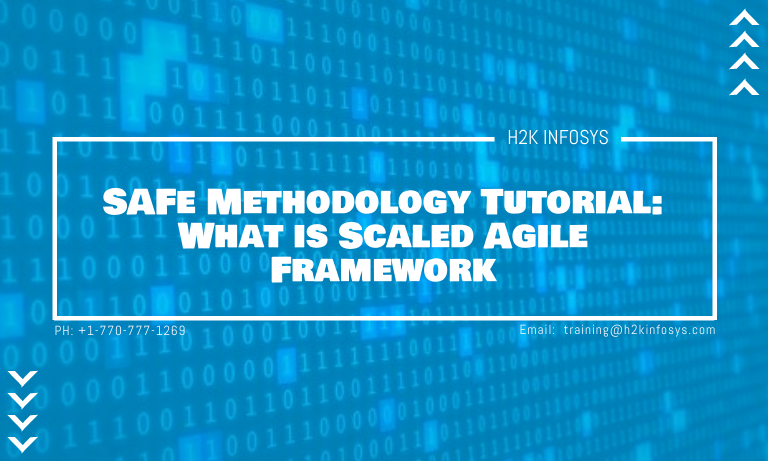







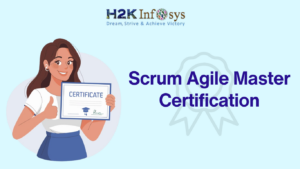

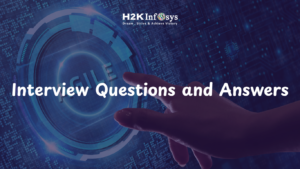











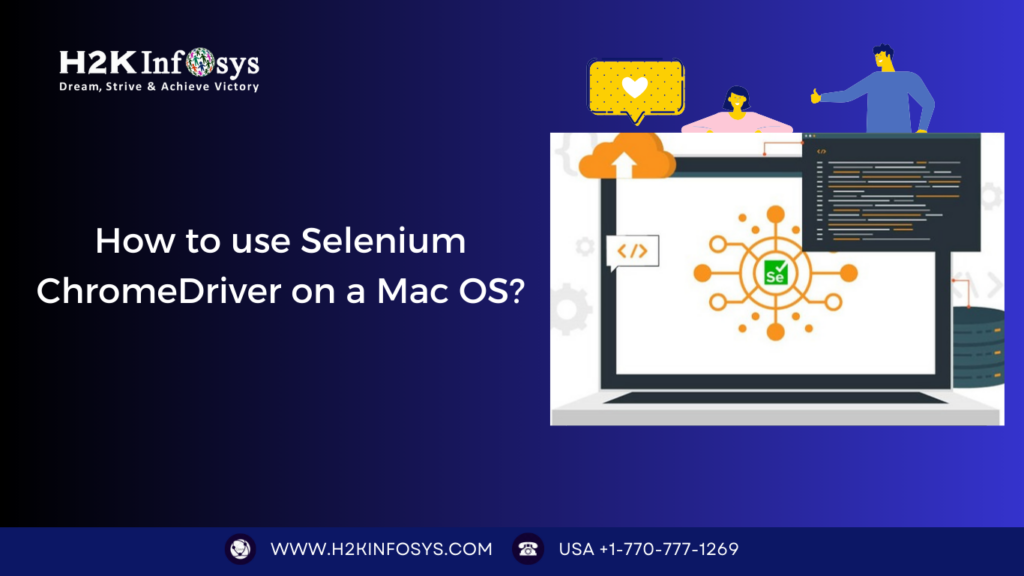
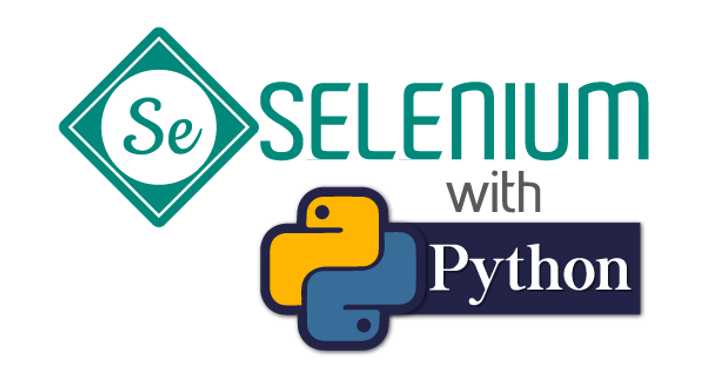





One Response